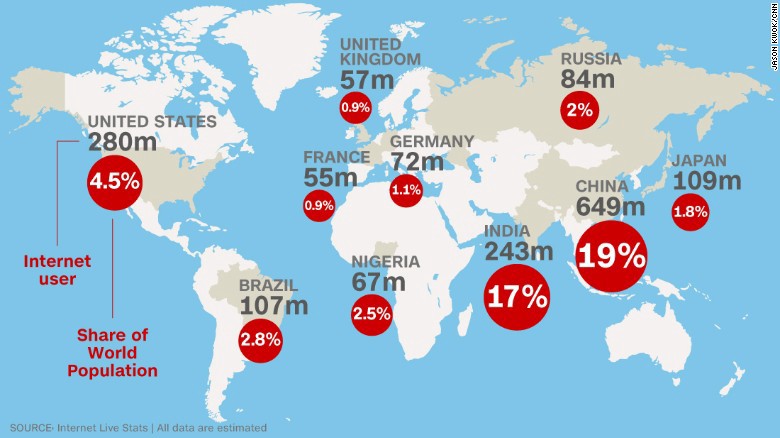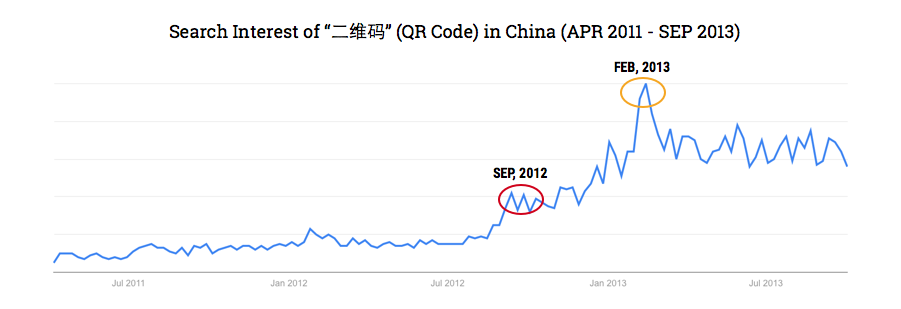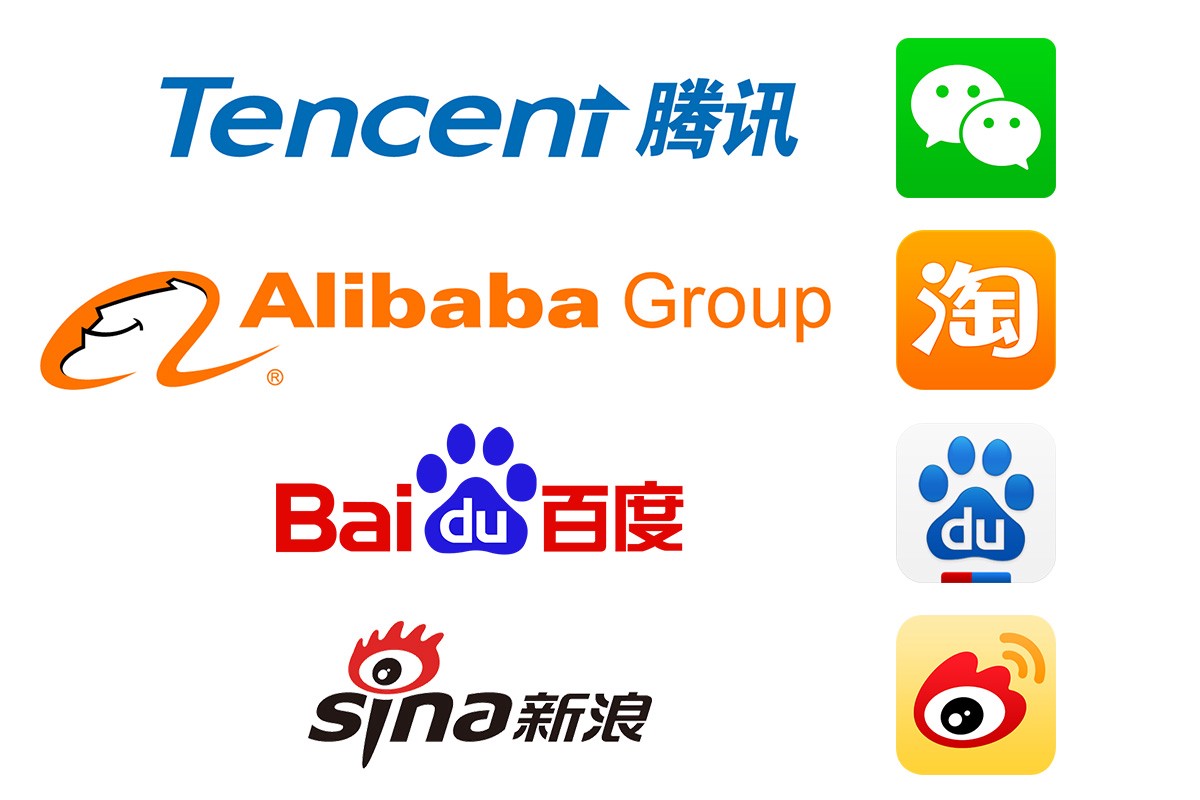It all started with a podcastI was listening to Design Details, feat. Meng To, and he shared some interesting stories from traveling around the world. Suddenly, a brief conversation caught my ears.Wait, you don’t get QR code?That’s quite surprising (to me). Coming from a country that QR code is literally everywhere, I used to scanning computer screens, posters in subway, restaurant tables, and goods in supermarket. The simple scan brings large convenience — making payment, joining social network, getting discounts, attaining information, and so forth.But on a second thought, I realized that I hadn’t scanned a single code since coming to the US last September. This sharp contrast triggered my initial curiosity. Then I looked back on QR code’s emergence, evolvement, and its role in today’s China. To my surprise, this black-and-white box is so important and it’s the apple of the eye of China’s tech giants, as well as countless merchants.Why it’s a thing?QR code was born to the best time in China – Mobile internet usage is out of roof, and O2O is the biggest pie of e-commerce. Scanning QR code is almost exclusive on mobile devices, and it’s so common among Chinese people. It became a lot more interesting when putting it in the context of China’s out-of-roof mobile internet usage numbers. As of June 2014, China’s mobile internet users reached 527 million, out of a total number of 632 million. The increasing speed is also amazing — China tacked on 14 million new internet users and 27 million new mobile internet users in just six months.From Google trend, we can see that O2O is getting more and more popular, and even catching up with B2B. Though living in the US, I could still feel the O2O tornado is sweeping over China. My tech news feed is piled up with O2O everyday - Just within last week, Baidu invested $100 million in O2O laundry service Edaixi, and JD.com, who makes Amazon.com hard to thrive in China, invested $700 Million In Chinese Supermarket Chain Yonghui. Not only giant companies, startups are also coveting this big pie. Though QR code wasn’t first born out of O2O, as a tool whose function is to connect offline and online, it’s largely valued as a powerful weapon to kick open the online-offline gate.Uncovering the reasonsWeChat gave QR code a strong riseWhere did you first learn about QR code? If you ask a Chinese that question, I bet nine out of ten would say WeChat. With 5 hundred millions monthly active users, you would never overemphasize WeChat’s importance in the rise of the QR code.
Scanning QR code is almost exclusive on mobile devices, and it’s so common among Chinese people. It became a lot more interesting when putting it in the context of China’s out-of-roof mobile internet usage numbers. As of June 2014, China’s mobile internet users reached 527 million, out of a total number of 632 million. The increasing speed is also amazing — China tacked on 14 million new internet users and 27 million new mobile internet users in just six months.From Google trend, we can see that O2O is getting more and more popular, and even catching up with B2B. Though living in the US, I could still feel the O2O tornado is sweeping over China. My tech news feed is piled up with O2O everyday - Just within last week, Baidu invested $100 million in O2O laundry service Edaixi, and JD.com, who makes Amazon.com hard to thrive in China, invested $700 Million In Chinese Supermarket Chain Yonghui. Not only giant companies, startups are also coveting this big pie. Though QR code wasn’t first born out of O2O, as a tool whose function is to connect offline and online, it’s largely valued as a powerful weapon to kick open the online-offline gate.Uncovering the reasonsWeChat gave QR code a strong riseWhere did you first learn about QR code? If you ask a Chinese that question, I bet nine out of ten would say WeChat. With 5 hundred millions monthly active users, you would never overemphasize WeChat’s importance in the rise of the QR code. In September 2012, WeChat released v4.3 that came with a built-in QR code scanner. It supported scanning all types of QR code and enabled a variety of ways to interact with WeChat. The scanner largely lowered the behavioral barrier of scanning for WeChat users, which by that time had reached a number of two hundred million.In the same month, Huateng Ma, the CEO of Tencent, indicated that QR code and O2O would be the biggest opportunity of mobile internet on China’s Internet Conference 2012.Tencent really did. In February 2013, WeChat strengthened QR code by adding more social functions to it. It broke the traditional process of joining group chat – searching group ID, sending request, and waiting for approval. Now, group chat could generate its own QR code, and with a simple scan, you are in. This feature made group chat a lot easier to start and organize, and people adopted it really fast. By that time, QR code had became a common idea for most WeChat users.Competition between tech giants reinforced the conceptAfter giving QR code the initial rise, WeChat kept improving its performance and making a seamless experience, such as enabling long-press recognition. Meanwhile, other tech giants, such as Alibaba, Baidu, and Sina, realized QR code’s power, and they added a built-in scanner to their own Apps one after another. Now, it’s unlikely that your smart phone stands without a scanner.
In September 2012, WeChat released v4.3 that came with a built-in QR code scanner. It supported scanning all types of QR code and enabled a variety of ways to interact with WeChat. The scanner largely lowered the behavioral barrier of scanning for WeChat users, which by that time had reached a number of two hundred million.In the same month, Huateng Ma, the CEO of Tencent, indicated that QR code and O2O would be the biggest opportunity of mobile internet on China’s Internet Conference 2012.Tencent really did. In February 2013, WeChat strengthened QR code by adding more social functions to it. It broke the traditional process of joining group chat – searching group ID, sending request, and waiting for approval. Now, group chat could generate its own QR code, and with a simple scan, you are in. This feature made group chat a lot easier to start and organize, and people adopted it really fast. By that time, QR code had became a common idea for most WeChat users.Competition between tech giants reinforced the conceptAfter giving QR code the initial rise, WeChat kept improving its performance and making a seamless experience, such as enabling long-press recognition. Meanwhile, other tech giants, such as Alibaba, Baidu, and Sina, realized QR code’s power, and they added a built-in scanner to their own Apps one after another. Now, it’s unlikely that your smart phone stands without a scanner. To make good use of QR code, tech giants built their own strategies. For example, in June 2014, Alibaba Group Launches Comprehensive Strategy to Broaden and Diversify the Use of Scannable Codes.Alibaba Group’s 11.11 Shopping Festival is a good manifestation of how the strategies were implemented. During the festival of last year, consumers could scan product QR codes on their mobile phone from more than 300 brands, including Uniqlo, Toys “R” Us and Gap. They could add items directly into their virtual Tmall.com shopping carts across 30,000 brick-and-mortar stores. This activity highly drove the QR code knowledge and acceptance among common people.It is the merchants that actually pushed itThe prosperity of QR code is not a contribution solely of tech giants. As platforms, Alibaba’s Taobao and Tencent’s WeChat actually share a common nature in the field of scannable code. It empowers merchants to promote in the offline world, and enables customers to access all services that merchants developed on this platform. Merchants finally establish a point-to-point connection to its customers, and for the first time, they played an active role in the internet world.
To make good use of QR code, tech giants built their own strategies. For example, in June 2014, Alibaba Group Launches Comprehensive Strategy to Broaden and Diversify the Use of Scannable Codes.Alibaba Group’s 11.11 Shopping Festival is a good manifestation of how the strategies were implemented. During the festival of last year, consumers could scan product QR codes on their mobile phone from more than 300 brands, including Uniqlo, Toys “R” Us and Gap. They could add items directly into their virtual Tmall.com shopping carts across 30,000 brick-and-mortar stores. This activity highly drove the QR code knowledge and acceptance among common people.It is the merchants that actually pushed itThe prosperity of QR code is not a contribution solely of tech giants. As platforms, Alibaba’s Taobao and Tencent’s WeChat actually share a common nature in the field of scannable code. It empowers merchants to promote in the offline world, and enables customers to access all services that merchants developed on this platform. Merchants finally establish a point-to-point connection to its customers, and for the first time, they played an active role in the internet world.



